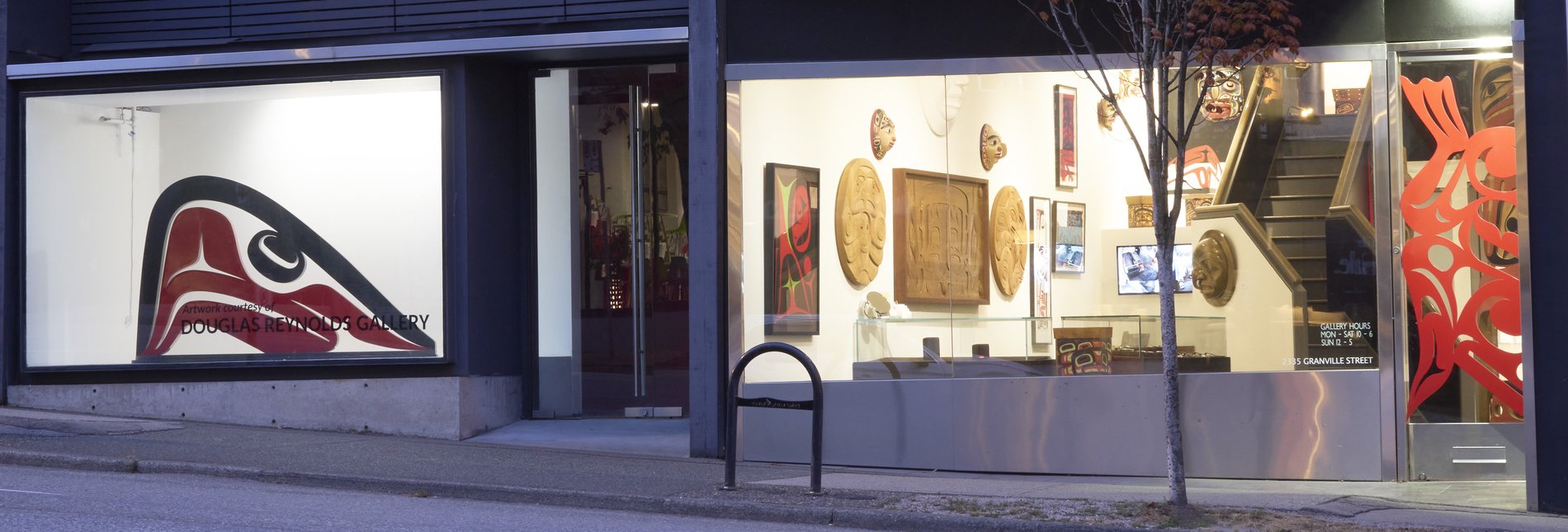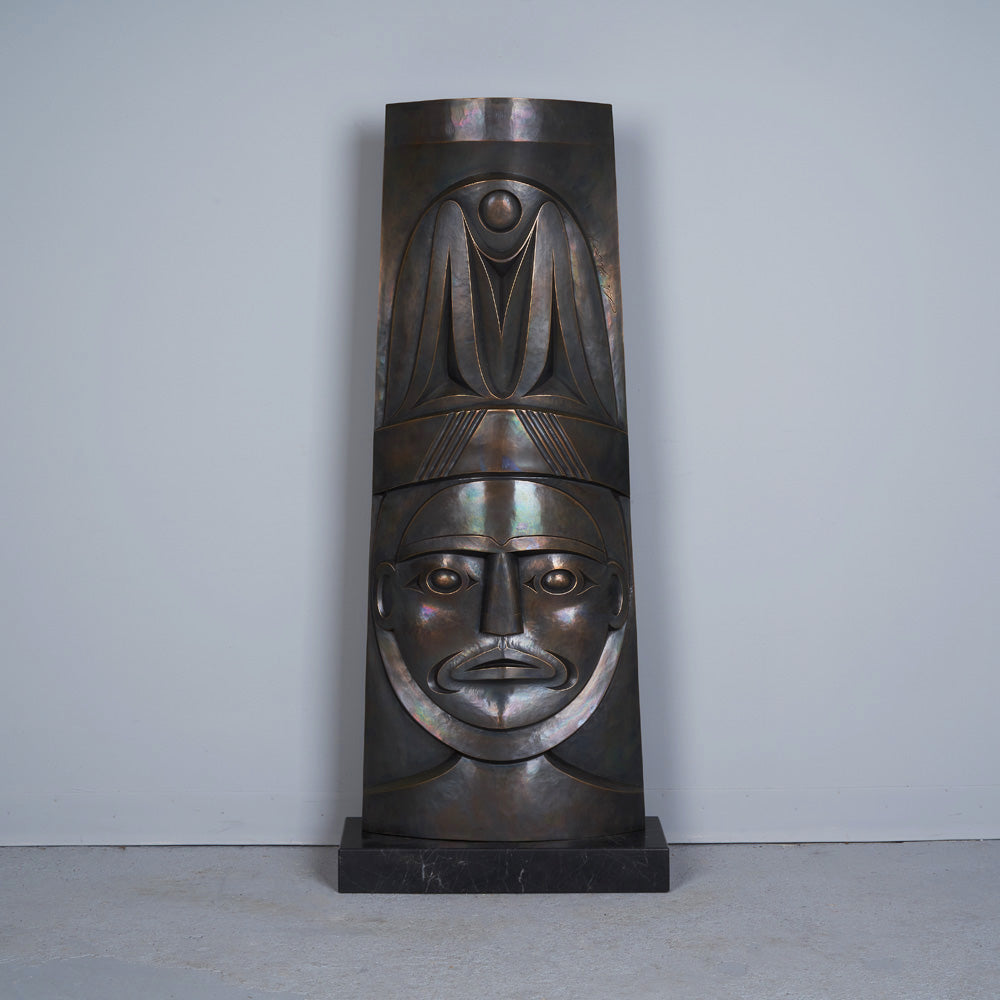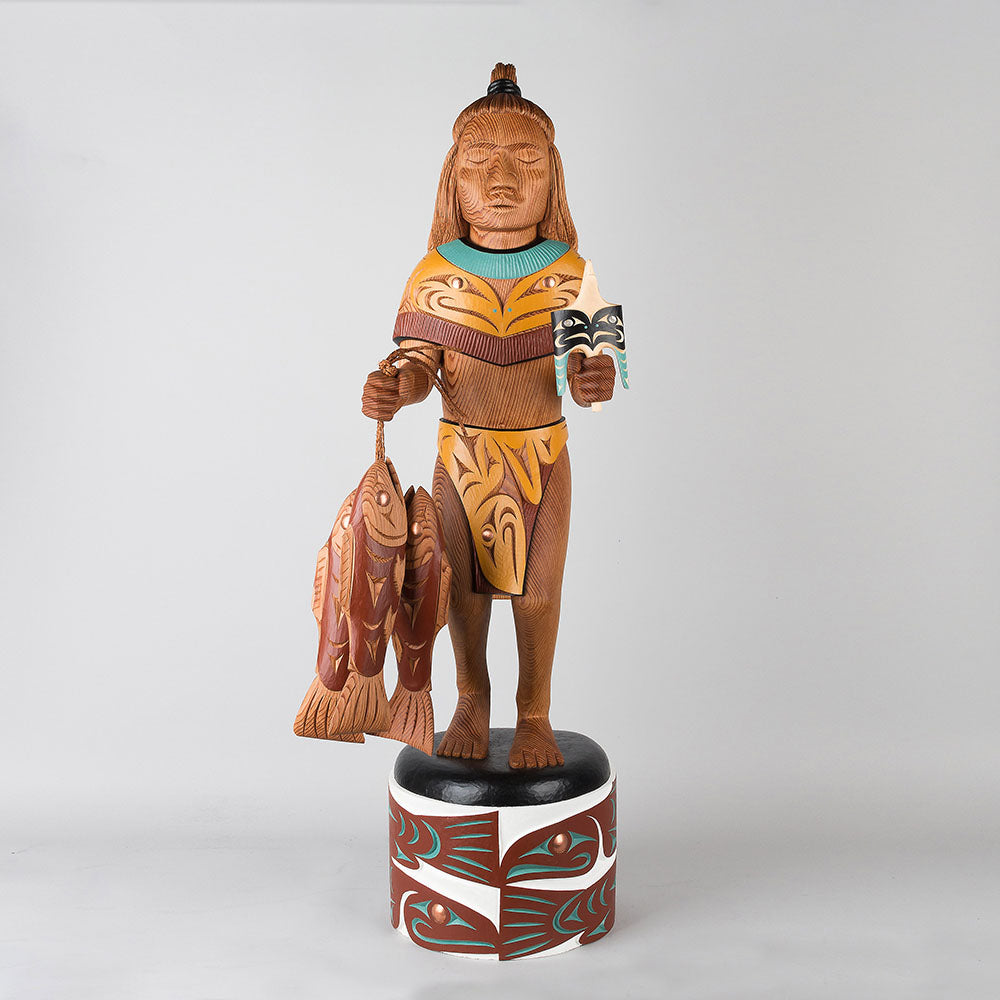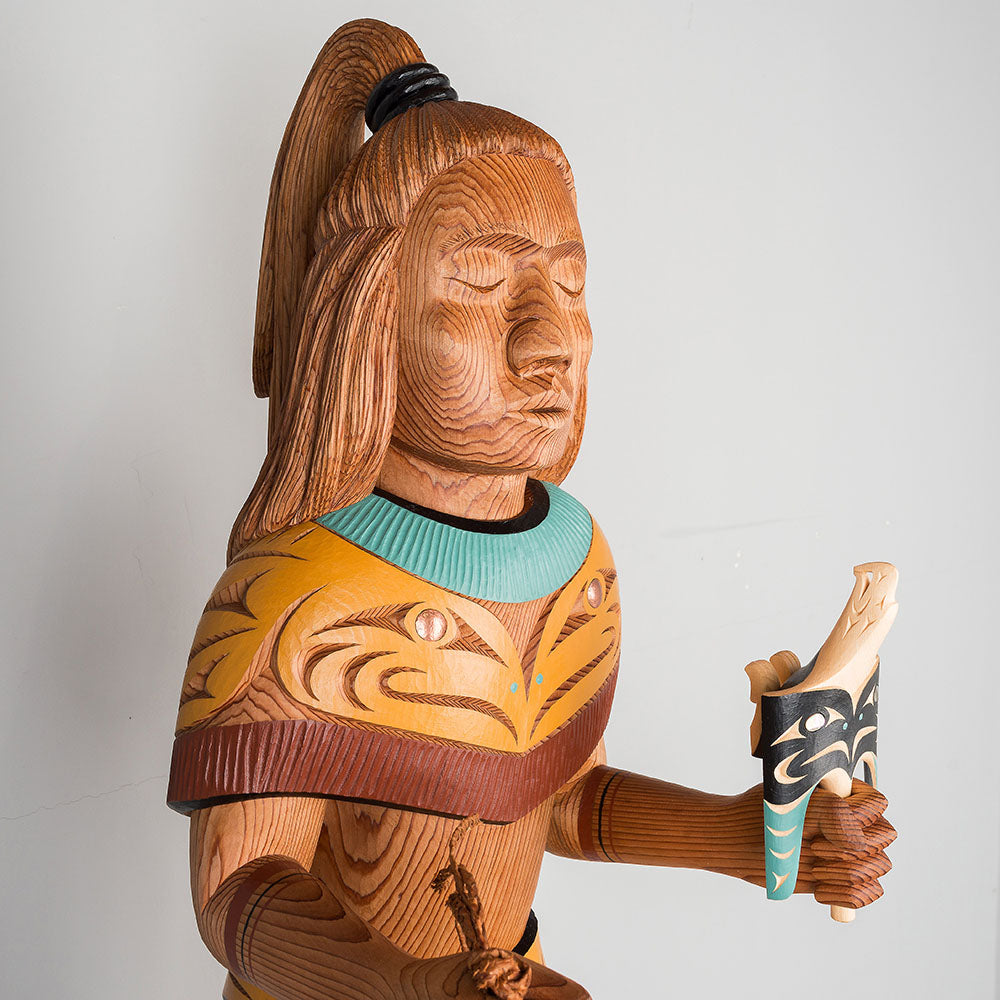It appears that your cart is currently empty

Luke Marston
Luke Marston has grown up in a family of artists and has been carving since he was a child. Both his parents, Jane and David Marston, are experienced carvers who provided Luke with an introduction to the art and skill of carving.
When first working Marston sought guidance from Nisga'a carver Wayne Young, who taught him about giving his pieces detail and a level of finish. Simon Charlie has also been an influential teacher and, in 1999, Marston assisted him in the creation of four house posts for a public school in Seattle. In the same year, the two of them aided Sean Whonnock and Johnathan Henderson in the carving and raising of a 25-foot totem pole at the Royal British Columbia Museum's Thunderbird Park.
Marston's style is characterized as bold and dramatic, combining a deep knowledge of Coast Salish heritage with his personal aesthetic. Recently, Marston was showcased in two major exhibitions: "Changing Hands: Art Without Reservation 2" and "Transporters: Tradition and Innovation", at the New York Museum of Arts and the Victoria Art Gallery, respectively. In addition to his wood carving Luke enjoys the medium of silver for expressing the legends and designs of the Coast Salish people.
Eagle Feather
Luke Marston (Salish)
Base: 10" diam Indigenous artwork on the Pacific Northwest Coast often incorporates figures and a...
Base: 10" diam Indigenous artwork on the Pacific Northwest Coast often incorporates figures and animals that are related to crest symbols. Crests have been passed down through families and have varying meanings depending on the context and association with a nation, clan, or family. The figures depicted in contemporary Northwest Coast Indigenous artwork also have varying meanings but there are some common characteristics from a range of sources, including oral histories and artist description...
$12,500.00
Shore to Shore
Luke Marston (Salish)
Edition 3/12Measurements do not include base.This cast edition of 12 is a portion of Marston's br...
Edition 3/12Measurements do not include base.This cast edition of 12 is a portion of Marston's bronze installation in Stanley Park which stands at the site of the artist's family’s ancestral village site X̲wáýx̲way and commemorates the history of his ancestors, Portuguese Joe and his first and second Salish wives, Khaltinaht and Kwatleemaat. Marston is the great-great-grandson of Portuguese Joe and Kwatleemaat.
$17,000.00
Salish Salmon Charmer
Luke Marston (Salish)
This sculpture tells the story of an infamous Salish Salmon Charmer. The fisherman, although blin...
This sculpture tells the story of an infamous Salish Salmon Charmer. The fisherman, although blind, knew of the most fruitful fishing spots. This piece was carved from old growth red cedar. The three salmon are carved from the same log as the charmer and the base. The removable rattle held in the figure’s left hand is carved from yellow cedar and is fully functional. Indigenous artwork on the Pacific Northwest Coast often incorporates figures and animals that are related to crest symbols. Cre...
$55,000.00
1 – 3 product(s) of 3






